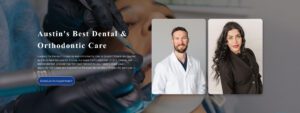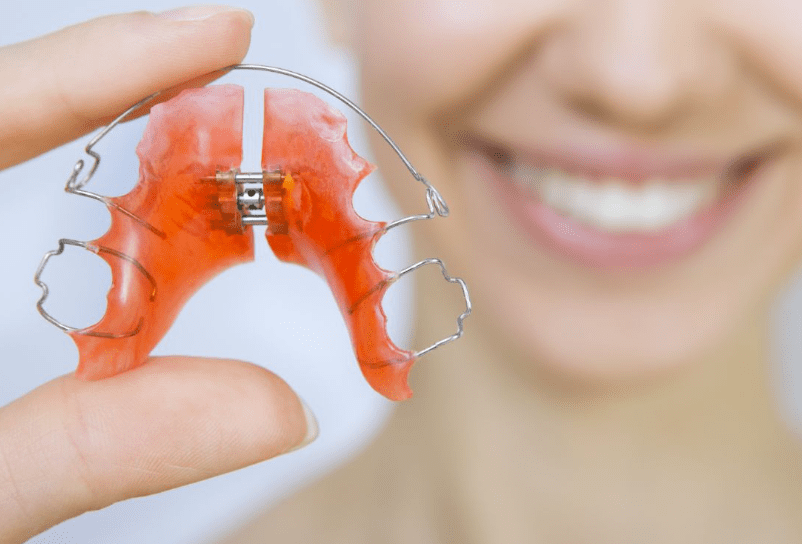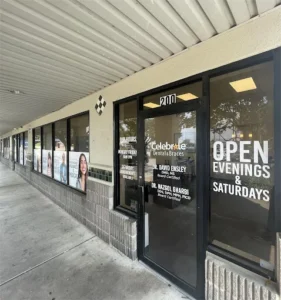This blog post will look at the orthodontic palatal expander which is one of the most widely used and recommended orthodontic treatment tools. If it’s a crossbite correction or simply widening the upper jaw to accommodate for crowded teeth, an upper jaw expander could just do the magic. This dental appliance is the most effective when applied at a young age; nonetheless, it can function for adults as well, under certain circumstances. If you’re thinking about this treatment or if your orthodontist suggested it, here is a need-to-know.
What is a Palatal Expander?
It is also called a dental expander or maxillary expander. It is an orthodontic dental appliance aimed at the widening of the upper jaw (maxilla). They are particularly beneficial for people with a narrow palate or crossbite issues. This widening process allows for more space within the mouth as well as the proper alignment of the upper and lower teeth as well as preparation of the jaw to other treatments such as braces.
There are various types of expanders. The rapid palatal expander (RPE) is used for palatal expansion within a short time only. Others include the removable expanders and the fixed expanders and they are made to suit your requirements. This dental appliance assists in appropriate positioning of your teeth and jaw in relation to each other and therefore is very vital.
The Process at the Clinic
The process is normally started by an initial check by your orthodontist to determine what is required of him or her to help you. When a palatal expander treatment is suggested, the patient will have a fitting process whereby the expander will be made to fit the mouth. The expansion is then progressively carried out through the use of the expander to make the desired expansion.
A palatal expander for kids is most effective since their bones are still in a developmental phase, and therefore easy to expand the palate. In adults, the process may require more extensive procedures to be provided such as surgery as compared to children since bones will be harder.
After placing the upper jaw expander, one will have to turn it according to a schedule which aids in the expansion of the palate. A typical turn will increase the size of the mouth by a little and in this manner, the change will be rather continuous which is good. The whole process can take several months up to a year and longer depending on a certain case.

The Side Effects and Pain Management
As with most treatments done in the dentist’s office, there are potential side effects. Pain with palatal expander is seldom severe and usually can be alleviated by simple analgesics. The first few weeks you are likely to feel some discomfort as your mouth adapts to the presence of the Turner expander when turning it. Some of the ways of dealing with pain include the use of currently available drugs, including pain killers, and using orthodontic wax on the wires.
Some palatal expander side effects patient experience include slight changes in speech, drooling and space between the front teeth as a result of expansion. However, these side effects are normally short-term as the mouth adjusts to fitted appliances.
How to Clean a Palatal Expander
During the treatment other important aspects that should be followed include hygiene. Food particles comprises the structure of the expander as it creates plaques which can lead to development of cavities. These are some problems that may be encountered when using an expander; one can therefore clean his/her expander thoroughly after each meal. Sift bristle toothbrush, fluoride soap, and it will be very helpful if you use a proxy brush to reach the natural crevices.
For further protection, a fluoride rinse can help to build up your teeth enamel and resist the formation of cavities. In case you feel that you are having a challenge in keeping your expander clean, do not hesitate to consult your orthodontist on how to maintain the cleanliness of a palatal expander.
Palatal Expander Alternatives
And even though palatal expanders are exceptionally effective, they are not the sole tool to expand the upper jaw. Other upper jaw expanding options are braces, aligners and in cases where the problem is severe, the use of jaw surgery. However, these alternatives are given when an expander cannot be used or when the patient is an adult who has already developed his or her bones.
Palatal Expander Cost
The cost of this expanding device will depend on issues such as geographical location, the level of difficulty in the task and whether the patient requires other procedures after the palatal expansion and and your insurance coverage. The average cost of an orthodontic palatal expander depends greatly on the place, for it costs between $2,000 to $5,000. Although this may look big, people with the condition should remember there are various gains in terms of oral health and function that go hand in hand with incurred costs. It is advisable to consult your specific dental insurance company because most dental insurance plans only provide a partial payment on orthodontic treatment for a narrow palate.
Choosing the Right Orthodontic Care
At [ Celebrate Dental Austin], our experienced orthodontists are dedicated to providing high-quality palatal expander treatment. We use the latest techniques and technology to ensure optimal results and minimize discomfort.
If you or your child are considering orthodontic treatment, we encourage you to schedule a consultation with our team. We can assess your specific needs and develop a personalized treatment plan to help you achieve a healthy, beautiful smile.
References
Stevens, K., Bressmann, T., Gong, S. G., & Tompson, B. D. (2011). Impact of a rapid palatal expander on speech articulation. American Journal of Orthodontics and Dentofacial Orthopedics, 140(2), e67-e75.
Inchingolo, A. M., Patano, A., De Santis, M., Del Vecchio, G., Ferrante, L., Morolla, R., … & Dipalma, G. (2023). Comparison of Different Types of Palatal Expanders: Scoping Review. Children, 10(7), 1258.
De Felippe, N. L. O., Da Silveira, A. C., Viana, G., & Smith, B. (2010). Influence of palatal expanders on oral comfort, speech, and mastication. American journal of orthodontics and dentofacial orthopedics, 137(1), 48-53.








